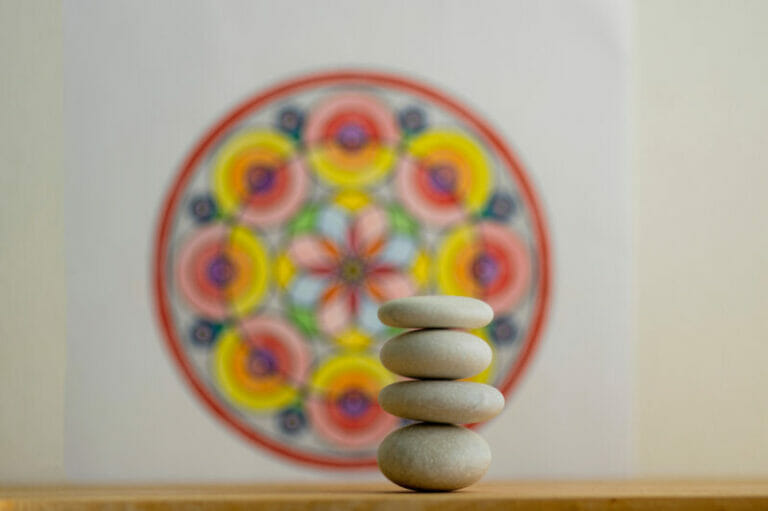Incense vs Essential Oils: Comparing Benefits and Uses
Both incense sticks and essential oils can transform your tensed and tiresome day into a sensory and aromatic experience.
However, each of these elements comes with its own set of advantages and drawbacks. While incense sticks are known for their intense aroma and for creating a traditional spiritual experience, using essential oils through oil diffusers provides aromatic essence without burning.
Let’s explore what differentiates the aromatic experiences of burning incense vs diffusing essential oil and which one is more beneficial for meditative and therapeutic experiences.
The following guide discusses the advantages and disadvantages of using each substance along with their distinctive properties.
Incense vs Essential Oils: Understanding the Difference

Both incense and essential oils hold distinctive places in various cultural practices and personal wellness routines.
Incense typically comprises plant-based materials like resins, barks, seeds, and flowers. When burned, these materials release fragrant smoke that can perfume a space or serve in ceremonial practices.
Essential oils, on the other hand, are concentrated liquids containing volatile aroma compounds from plants. The making of essential oils involves extraction methods such as steam distillation or cold pressing.
The principal difference between incense and essential oils lies in the method of use. Incense involves combustion to activate scent, whereas essential oils do not typically require burning and can be diffused without direct heat.
Comparison Table:
| Feature | Incense | Essential Oils |
| Form | Solid (sticks, cones, resin) | Liquid |
| Usage | Burned to release smoke | Diffused or applied (non-burning) |
| Extraction | Direct from botanicals, often unaltered | Processed to extract oils |
| Purpose | Aromatization, meditation, ceremonies | Aromatherapy, topical applications |
The choice between using incense or essential oils often hinges on personal preference and desired effect. For those seeking a passive ambiance, incense might be the ideal choice. However, for targeted therapeutic benefits or customizable scents, essential oils may offer more versatility.
By understanding the unique qualities and uses of incense and essential oils, we can make informed decisions about which suits our needs and enhances our living spaces thoughtfully.
To further our knowledge, research on the effects of evaporating essential oils on indoor air quality provides insights into their impact beyond fragrance alone.
Similarly, exploring the various uses of essential oils in contemporary spiritual practices can shed light on their significance in cultural contexts.
Comparing Uses: Incense vs Essential Oils for Diffusers

When considering aroma diffusion methods for enhancing the ambiance of a space, we often compare the use of burning incense to diffusing essential oils. Both have their distinct processes and outcomes that cater to different preferences and needs.
Essential Oils in Diffusers
Essential oils are highly concentrated plant extracts that we use for their aromatic and therapeutic properties. In a diffuser, these oils are dispersed into the air in a fine mist, allowing for a clean and controlled scent release.
Diffusers come in various types, including ultrasonic, nebulizing, and evaporative models. When we use essential oils in a diffuser, it offers us the flexibility to:
- Combine oils to create custom blends
- Adjust the strength and duration of the scent
- Enjoy the benefits of aromatherapy without smoke or ash residue
Using essential oils through a diffuser can provide us with a therapeutic experience. Oils like lavender and chamomile can promote relaxation, while peppermint and citrus oils may help to invigorate and enhance our focus.
Burning Incense
On the other hand, burning incense as compared to using essential oil involves the combustion of incense sticks, cones, or resins to release fragrant smoke. This traditional practice creates a distinct aroma that permeates a space quickly and can have a much stronger presence compared to a diffuser.
When we choose to burn incense, we are engaging in a ritual that has been a part of spiritual and cultural traditions for centuries. However, it is important to note that:
- Incense smoke contains particulates and can affect indoor air quality
- Some people may be sensitive to smoke or find it triggers respiratory issues
- The scent from incense is harder to control in terms of intensity and duration
In a comparison of burning incense and essential oils, we must weigh the sensory pleasure against the practical implications, such as smoke production and clean-up.
The decision ultimately depends on our individual needs, health concerns, and preferences for scent intensity and atmosphere.
Spiritual Aspects: Incense vs Essential Oils

In the realm of spirituality, we often turn to olfactory elements, such as incense and essential oils, to enhance our practices.
Our choice between burning incense or using essential oils can significantly influence the atmosphere and intention of our spiritual routines.
Incense, with its smoke and ancient traditional use, is grounded in ritualistic practices, often linked with purification and the act of offering.
Its historical significance is underscored by the story of Aaron burning fragrant incense in the Tabernacle. Burning incense, such as frankincense or myrrh, is known for creating a sacred space and can be seen as a direct connection to the divine.
On the other hand, essential oils carry potent energetic profiles that can be utilized in various spiritual practices. They can be diffused to create a peaceful atmosphere or applied topically with the intention of healing or meditative purposes.
Essential oils often align with the modern approach to spirituality, focusing on the individual’s mental and emotional well-being. The energetic aspects of essential oils play a crucial role in balancing our inner self.
- Incense
- Creates a traditional ceremonial space.
- Associated with ritual purity and offerings.
- Smoke acts as a symbol of our prayers rising.
- Essential Oils
- Offer a modern, personalized spiritual experience.
- Used for mental clarity and emotional balance.
- Provide direct aromatic benefits without smoke.
Our use of these tools should be mindful and respectful of their origins and cultural significance. We meld the ancient and the new, finding what resonates with our spiritual journey.
Advantages and Disadvantages: Burning Incense vs Essential Oils
You must consider the distinct advantages and disadvantages each brings to the table to make an informed decision based on your needs and preferences.
Benefits of Incense
Incense has a rich history and is known for its ability to create a traditional, ceremonial ambiance. We find that burning incense can facilitate concentration and deepen meditation practices.
Studies also indicate that certain incense materials can exhibit calming effects and may increase focus during activities like yoga.
Drawbacks of Incense
However, the use of incense is not without its disadvantages. One of the primary concerns with incense is the smoke it produces, which can be harmful if inhaled in large quantities.
So, people with respiratory issues are especially susceptible to the harmful effects of incense burning. We must also be cautious of the fire risk associated with the burning of incense sticks or cones. Hence, incense burning comes with both pros and cons.
Advantages of Essential Oils
Moving on to essential oils, we recognize their versatility in application methods, such as inhalation or topical use, and their role in aromatherapy for physical and emotional well-being.
Essential oils, especially patchouli oil are highly concentrated, which means a small amount can have a significant impact.
Also, some essential oils have been linked to antibacterial and antiviral properties, presenting a practical benefit in certain health contexts.
Disadvantages of Essential Oils
On the downside, essential oils have their limitations. Certain oils can cause skin irritation or allergic reactions in sensitive individuals.
Additionally, the quality and purity of essential oils can vary greatly between brands, making it essential for us to choose them wisely to ensure safety and efficacy.
Types of Incense Burners and Diffusers
There are a variety of tools designed to disperse fragrances. Incense burners and diffusers are two popular devices for scenting environments, promoting relaxation, and enhancing ceremonial practices.
Incense Burners:
- Traditional Charcoal Burners: We often see these in ritualistic settings. They involve igniting a piece of charcoal, after which incense resin or powder is placed on top, releasing its fragrance as it burns.
- Ash Catchers: Simple and widespread, these consist of a wooden or metal stand where stick incense fits snugly, allowing the ash to fall cleanly.
- Cone Incense Holders: Designed specifically for incense in cone form, these holders encase the cone and may feature intricate designs that cause the smoke to billow out in decorative patterns.
Diffusers for Essential Oils:
- Nebulizing Diffusers: Employing no heat and no water, nebulizers atomize essential oils, creating a fine mist that gracefully fills a room with aromatic molecules.
- Ultrasonic Diffusers: These use water and ultrasonic vibrations to disseminate essential oils as a mist, which also helps to humidify the air.
- Ceramic and Electric Warmers: Ideal for gentler diffusion, these warm essential oils at a low heat, which disperses the aroma without affecting its therapeutic properties.
| Type | Heat Source | Material | Primary Use |
|---|---|---|---|
| Charcoal Burner | Open flame | Metal, Stone | Resins, Powders |
| Ash Catcher | Incense stick | Wood, Metal | Stick incense |
| Cone Holder | Incense cone | Ceramic, Metal | Cone incense |
| Nebulizer | None | Glass, Wood | Pure oils |
| Ultrasonic | None (vibration) | Plastic, Ceramic | Oils in water |
| Warmers | Electricity | Ceramic, Metal | Warming oils |
We prefer diffusers to avoid smoke, especially in closed environments or when high-quality essential oils are on hand.
For those drawn to tradition and ritual, incense burners offer a sensory experience connected to ancient practices. It’s essential to choose an option that aligns with our desired experience and health considerations.
Frequently Asked Questions
What are the health implications of using incense compared to essential oils?
Research suggests that burning incense can release harmful particles potentially affecting respiratory health. Essential oils, when used through diffusion, generally offer a cleaner alternative with fewer harmful byproducts, though they should also be used with caution as overexposure can lead to sensitivity or allergic reactions.
How do the methods of diffusing incense and essential oils differ?
Incense is typically lit and left to burn, releasing smoke that carries the fragrance. This method involves direct combustion, which affects the surrounding air quality. Conversely, essential oils are often used with diffusers that do not burn the oil but instead disperse it into the air as tiny droplets, which is considered a safer method of diffusion that maintains air quality.
What are the advantages and disadvantages of using incense for aromatherapy?
Incense has the advantage of being simple to use and is often associated with traditional spiritual practices. However, the disadvantage lies in its smoke production, which can be detrimental to air quality and may pose health risks with long-term exposure.
Can the use of a lavender oil diffuser be more beneficial than burning incense sticks?
Using a lavender oil diffuser can be more beneficial than burning incense sticks due to the absence of smoke, which can carry harmful compounds. The diffuser disperses the essential oil without burning, retaining the therapeutic properties of lavender oil.
Conclusion
The experience of both burning incense sticks and diffusing essential oils elevates your tiresome day and provides an aromatic and therapeutic experience.
The choice between the two is as individual as the scents themselves. Both practices come with their own sets of pros and cons which have been discussed in detail in the above article.
Whether it’s the ceremonial elegance of incense or the therapeutic embrace of essential oils, the choice remains with you.
If you have problems with smoke, burning, or respiratory issues, then incense might not be good for you. On the other hand, there might be allergic reactions associated with oils.
Whichever option you choose, it is bound to bring a serene experience and ease your troubles away with the relaxation magic of aromatherapy.







